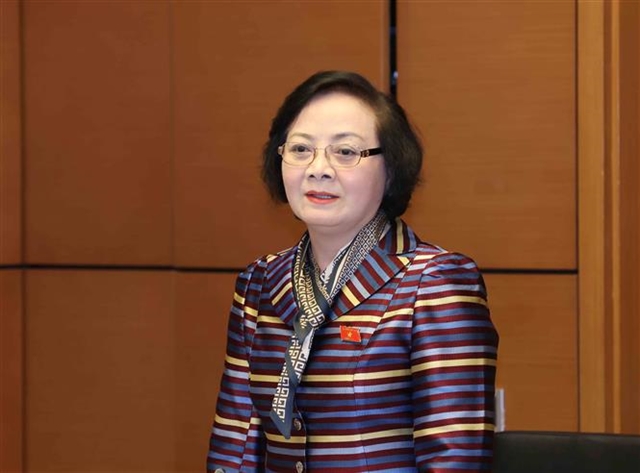Apparatus overhaul to cut 9 government entities, home affairs minister says_bang xep hang colombia
作者:Nhận Định Bóng Đá 来源:Ngoại Hạng Anh 浏览: 【大中小】 发布时间:2025-01-10 07:20:52 评论数:
Apparatus overhaul to cut 9 government entities, government entities bang xep hang colombia home affairs minister says
December 04, 2024 - 14:48 |
| Minister of Home Affairs Phạm Thị Thanh Trà. —VNA/VNS Photo Phương Hoa |
HÀ NỘI — Streamlining plans are expected to reduce the number of government entities from 30 to 21, according to Minister of Home Affairs Phạm Thị Thanh Trà.
These include 13 ministries, four ministerial-level agencies and four government bodies.
The Ministry of Planning and Investment (MPI) will merge with the Ministry of Finance (MoF). The new ministry is expected to be named the Ministry of Finance and Development Investment, or the Ministry of Economic Development.
The Ministry of Transport (MoT) and the Ministry of Construction (MoC) will be combined to form the Ministry of Infrastructure and Urban Affairs.
In an effort to address overlaps in the management of water resources, river basins and biodiversity, a new Ministry of Agriculture, Natural Resources and Environment will be formed from the merger of the current Ministry of Natural Resources and Environment (MoNRE) and the Ministry of Agriculture and Rural Development (MARD).
The Ministry of Information and Communications (MIC) will join the Ministry of Science and Technology (MoST) to become the Ministry of Digital Transformation, Science and Technology (or Ministry of Digital Transformation, Science, Technology and Information).
Several responsibilities currently undertaken by the Ministry of Labour, Invalids and Social Affairs (MoLISA) will be moved to the Ministry of Education and Training (regarding vocational training) and the Ministry of Health (regarding social welfare, child affairs, and prevention and control of social misconduct).
The remaining departments under the MoLISA will be merged with the Ministry of Home Affairs (MoHA) to form the Ministry of Home Affairs and Labour.
The Ministry of Health (MoH) will also assume additional responsibilities from the Board of Health Protection and Care for Central-level Officials, which will soon cease operations.
The Ministry of Foreign Affairs will take over the main responsibilities of the Party Central Committee’s Commission for External Relations and the National Assembly’s Committee for External Relations when these two units are dissolved.
The Management Board of the Hồ Chí Minh Mausoleum will be managed by the Ministry of National Defence, becoming part of the ministry’s organisational structure.
Four ministries, including the Ministry of Public Security, the Ministry of Justice, the Ministry of Industry and Trade and the Ministry of Culture, Sports and Tourism, as well as four ministerial-level agencies of the Government Office, the Government Inspectorate, and the State Bank of Vietnam will remain unchanged.
The Committee for Ethnic Minority Affairs will take over the Government Committee for Religious Affairs from the MoHA and poverty reduction responsibilities from the current MoLISA.
Specific plans were also announced to restructure the Party apparatus.
The restructuring extends beyond ministerial consolidation, home affairs minister Trà said, adding that the number of units under ministries and ministerial-level organisations will be cut by 15-20 per cent.
This is a significant reduction in general departments, bureaus, departments and public service organisations to address current overlapping functions and aim to create a leaner, more efficient administrative apparatus.
The rearrangement will include reducing staff positions and improving the quality of personnel to meet the requirements of each agency's new context.
Trà stressed that it is necessary to draw up standout policies to reduce the impacts of the administrative reform on civil officers and public employees, as well as ensure their rights during the streamlining process.
“These plans follow the guidelines for the restructuring and streamlining of the government apparatus as required by the Central Steering Committee and the Politburo, while building on the achievements on reforming the Government, the National Assembly and the judiciary to ensure a democratic, professional, modern, upright and strong government that guarantees transparency, creativity, smooth operations and effectiveness,” said Trà. — VNS
